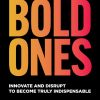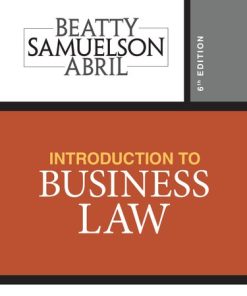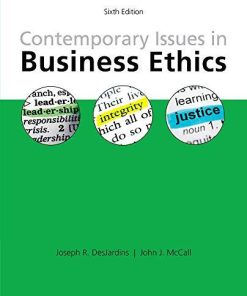Business and Management Consulting 6th Edition Louise Wickham 9781292259536 1292259531
$50.00 Original price was: $50.00.$25.00Current price is: $25.00.
Business and Management Consulting Louise Wickham – Ebook Instant Download/Delivery ISBN(s): 9781292259499,1292259493,9781292259536,1292259531
Product details:
- ISBN 10: 1292259531
- ISBN 13: 9781292259536
- Author: Louise Wickham; Jeremy Wilcock
Gain consulting insights into business decision-making in today’s environment Business and Management Consulting, 6th Edition, by Wickham and Wilcock, first published as Management Consulting over 20 years ago to guide students through the consultancy process. This edition, renamed Business and Management Consulting, reflects the way in which the consulting world has changed over the past two decades – new digital technologies have made information more accessible and changed the way businesses have to operate, so management consultants need to have a wider view of their client company. Management consulting remains a popular career choice but undertaking a consulting project for the first time can seem daunting for a student or new professional. This book continues to offer a practical guide to balancing theory and practice, while also giving tips and techniques to the more seasoned practitioner, so is ideal for anyone who is undertaking a consulting project. This is delivered from the accumulated knowledge and insight of the authors and contributors, who all have been consultants. The 6th Edition has been revised to reflect how new technologies for communication and information gathering have changed the way in which consultants operate. It also includes more insights into how businesses take decisions that impact consulting projects in today’s faster paced, more volatile environment. Key features A comprehensive introduction to the best practice in conducting a consulting project Key insights into how best to tackle the challenges that arise Case studies from across a wide range of industries at the end of each chapter and a long case study running throughout the book Help in choosing and developing a career in consultancy Extensive references and further reading to underpin a student’s knowledge In the Preface, several ‘pathways’ are provided for the different types of project a student may be required to undertake, taking into account their academic level and previous experience Throughout the chapters, the key ideas are highlighted to aid the reader in navigating the book New to this edition More information on how to sell a consulting project Further detail on ways to manage the project tasks with specific tools Specific tools for analysis of digital communications such as websites and social media Techniques for minimising the risks the consultant may face New case exercises, based on real consulting projects, to put tools and techniques into practice Louise Wickham has over 35 years business experience, both within companies and as a consultant, working for a wide range of consumer-facing businesses and the not-for-profit sector. Jeremy Wilcock is Lecturer in International Marketing at the University of Hull. He has 27 years industrial experience with a major multi-national where he worked on numerous internal consultancy projects. He has lectured regularly in subjects including strategic management and business analysis at undergraduate and postgraduate level, and has supervised student consulting projects. Pearson, the world’s learning company.
Table contents:
Part 1: The nature of management consulting and how it adds value
1.1 The history of management consulting
1.2 The consulting industry today
1.3 What a management consultant does
1.4 The client–consultant interaction
1.5 The responsibilities of the management consultant
1.6 Modes of consulting
1.7 The decision to use a consultant
1.8 Rescuing a failing business
1.9 What a consultant can provide
Part 2: Consulting: the wider context and consulting process
2.1 Lifecycle of a business and the role of consulting
2.2 Consulting by business function
2.3 Consulting to the non-profit and public sectors
2.4 Overview of the consulting process
2.5 Initial contact and initiating the project
2.6 Preliminary analysis of the issues and defining objectives
2.7 Pitching the project: the formal proposal and project charter
2.8 Project progression and follow-up
Part 3: Consulting across borders and cultures
3.1 Why firms compete internationally
3.2 Preparing to compete internationally
3.3 Researching and selecting overseas markets
3.4 Ways to enter the international market
3.5 Operating successfully in overseas markets
3.6 International marketing
3.7 Global marketing planning
3.8 Managing change and uncertainty
3.9 Managing the client–consultant relationship
Part 4: Selling the project
4.1 The effective consultant’s skill profile
4.2 The consulting selling process
4.3 The function of the project proposal
4.4 What to include in the proposal and an example
4.5 An example project proposal
Part 5: Defining the destination and developing a strategy
5.1 Identification of opportunities and issues with the client organisation
5.2 Problem analysis, specification and quantification
5.3 Objective setting: defining the desired end-state
5.4 Understanding and reconciling consultant and client objectives
5.5 Developing a strategy for the destination
5.6 Understanding the client’s defining characteristics
5.7 Developing the strategy for the journey
Part 6: Evaluating client capabilities and business opportunities
6.1 Using analysis skills
6.2 Preliminary analysis techniques
6.3 Capabilities of businesses
6.4 Identification and evaluation of strategic options
6.5 Planning for the future
Part 7: How to work with clients and teams
7.1 Client needs, consultant’s response
7.2 Key skill of influencing
7.3 Key skill of building rapport
7.4 Working with teams
7.5 Leading a team
7.6 Challenging constructively
Part 8: Managing the client during the project
8.1 Consultant–client engagement for project implementation
8.2 Relationship with the client during the project
8.3 Decision making within the client organisation
8.4 Client relationships and business ethics
8.5 The desire for change by the client organisation
8.6 Change-enhancing interactions by the consultant
8.7 Overcoming resistance
8.8 Benchmarking project progression
8.9 Understanding the roles of client team members
8.10 Types of project shock and responding to them
Part 9: Creative approaches for developing solutions
9.1 How to use analysis to develop solutions
9.2 Mind mapping
9.3 Brainstorming
9.4 Seven basic tools
9.5 Seven new management tools
9.6 Other analysis methods
9.7 Tools for digital analysis
Part 10: Managing the project tasks
10.1 Individual roles for team members
10.2 Project and financial planning
10.3 Organising meetings and workshops
10.4 The importance of time management and effective time management
10.5 Time management systems and dealing with slippage
10.6 The project log
10.7 Getting the right decisions
Part 11: Communication skills and presenting your ideas
11.1 The nature of business communication
11.2 Communication as a business tool
11.3 Types of communication
11.4 Planning the communication
11.5 The consulting report
11.6 Presentations
11.7 Making a case, answering questions and meeting objections
Part 12 Post project and consulting as a career
12.1 Transferring project ownership
12.2 Post-project summary and review
12.3 Follow-up projects and key client management
12.4 Using consulting projects as case studies
12.5 Recognising the successes
12.6 Success and transferable skills
12.7 Knowledge Transfer Partnerships
12.8 Recording successes on your CV and relating them in job interviews
12.9 Learning from failure
12.10 Becoming a consultant
12.11 The internal consultant
12.12 Knowing yourself: psychometric tests
People also search:
ava business consulting and risk management llp
eps management and business consulting
business consulting and enterprise risk management
business and management consultancy activities
business and management consultancy activities 16013
You may also like…
Business & Economics - Management & Leadership
Uncategorized
Business & Economics - Mathematical Economics
Uncategorized
Biography & Autobiography - Business & Finance
Million Dollar Consulting: The Professional’s Guide to Growing a Practice 6th Edition
Uncategorized
Business & Economics - Logistics
Logistics and Supply Chain Management 6th Edition by Martin Christopher 1292416205 9781292416205
Uncategorized












